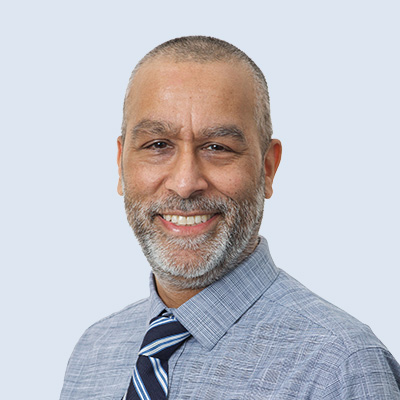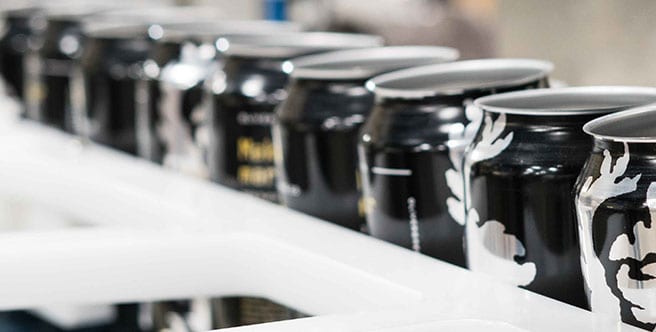Arshad Carim: Arshad Carim here with the Alexander Group, and we’re here for an executive interview today with Matt Schoessler of head of North America sales for Honeywell Building Solutions. Yes. Hi, Matt. Good to see you.
Matt Schoessler: Hey, good to see you, Arshad. Happy to be here.
Arshad: Awesome. Well, Matt, a couple of questions for you and I wanted to start off by asking you a little bit about what’s going on in the manufacturing industry today. And given some of the worries over an impending recession, what are some steps that you think manufacturers should be thinking about taking to prepare?
Matt: Well, what Honeywell Building Solutions is, is a master systems integrator. And so, we incorporate all the Honeywell technologies and include products from 100 different vendors that we can bring in to be highly flexible for the marketplace and to prepare ourselves moving into the environment where there could be a shrinking of the economy or a changing of the economy, but inside of those environments are always opportunities for change. Inside of chaos, there’s always opportunity to pursue when approaching those changing in environments. The biggest step is to be prepared for change, be flexible for change, knowing that you have to be able to adapt to that change. Not all companies are always ready for that or are not always prepared for that, but those that can see it coming and have a plan or those that are going to be much better prepared to survive through it. One of the positive pieces of our business is that because we have that integration piece, that’s the core of what we do. We can adjust to the changing in the economy, changing in the markets, changing and the needs in which vertical market to shift to or how to adapt to what’s going on in their environment and to continue to be that partner for them moving forward in that space. And so again, the answer is to be flexible, be ready to adapt, have a system in place that allows your organization to make those shifts to find the new streams of growth to do that.
Arshad: Got it. So plan ahead, execute the plan and then use the nimble-nimbleness you have.
Matt: Yeah, Plan A, B, and C ready to move through that, whether or not you’re going to use them or not. We look back at what the environment of COVID taught us is that it came on us so quickly, so hard. There are organizations that saw this huge drop in their sales and the revenue model. There are also those that made very quick shifts and changes in a matter of months that were able to go from “This was our bread and butter” to seeing this whole new revenue stream pop open for them and those that were ready and able to be flexible enough to do that completely changed their model moving forward and have been-it’s been a strong exercise for them to go through and they’ve coming out even bigger or better than they were before. For those that were able to be ready, accept the change, and focus on what the new environment was.
Arshad: Got it. Got it. Related question to that is how would you say a manufacturer’s approach might need to differ when they’re planning in high growth versus slow growth economies?
Matt: Well, it’s somewhat similar, but in these slower growth economies where you’re trying to go through these changes, it’s so important to focus on these fixed costs as well. Right. These are people, obviously, but it’s also capital. You know, it’s the facilities, the environments that you’re bringing your people into. Another thing that COVID taught us is it’s about the human experience to do this, right? And those companies that are either committed to sustainability or those that are trying to find their path inside sustainability or reduce carbon footprints, both of those create environments that you can reduce your fixed costs moving into an environment where there is reduced revenue or the inflation pressures or things that we’re going through right now, which are supply chain challenges. But underneath those two, those umbrellas have either reduced carbon or you’re looking for a sustainable future in your organization. Both of those, there are opportunities to reduce your costs now and still deliver on both of those initiatives for those companies that prioritize that. And that’s really an area that Honeywell is very good at where it changes it from “This is something good I want to do because it’s good for the planet”, but it can also be very good for the organization in terms of reducing those fixed costs, bringing energy efficiencies into the subject matter, using different technologies that are available to reduce those costs and maximize the human experience inside of your building, your factory, your commercial space, your hospital, your university, brand new commercial or residential developments that are coming.
Arshad: It’s a big opportunity.
Matt: Yeah, it certainly can be, inside of that space for those that want to pursue it.
Arshad: Yeah. So, Matt, I want to ask you a little bit about Honeywell and its mission. Can you talk a little bit about Honeywell’s mission and how-what it means to you, how you interpret it and live it?
Matt: Well, Honeywell is big in terms of sustainability, and diversity is-one of the core cultures of Honeywell is to continue to advance the focus on the planet and the focus on our people in being able to move us forward inside of that space. It’s exciting to be a part of that much energy being focused on the people, and that is also another opportunity for constant change. This isn’t an end result. You’re there and you win and it’s over. It’s a constant move towards creating an environment where people really want to be excited about being a part of something bigger than just them being part of their close ecosystem with the people that they work with, as well as finding ways to be part of the much larger organization and be part of a movement inside of this space that we’re working on. And those two areas are just two examples of the space that Honeywell is focused on, and it’s exciting to be a part of that in terms of the culture.
Arshad: Yeah, that’s great. With all of the discussions lately about talent and retaining talent and losing talent, you know, I think it’s great to be able to have that higher purpose and that passion. And when working with companies and seeing companies that are able to create that, they’re they’re weathering the storm better. They’re retaining their talent more. And like you said, it makes them stronger.
Matt: Yeah, Yeah. One of the things that [we] really shifted towards, and it’s not like it’s this huge “ta-dah” moment, it’s acknowledging the importance of that front-line leader, that front-line manager. Right. That they set the tone, the attitude, the temperature, the focus, the purpose of the organization.
Arshad: Yeah.
Matt: Investing resources on not just the individual to be better at what they are or better professional skills or better trained. You have to train the manager on how to be a manager and acknowledge the importance of that. They are in the organization. I can have a specific need that I want to roll out. I want to set a certain tone. I want to set a certain message, but I can’t compete with that front-line manager that says “Don’t worry about math, this is what you want to do.” I can’t recover from that.
Arshad: Right.
Matt: But if we focus on that front-line manager, give them the tools, the awareness of who they are, the empowerment that they have, and let them be the leaders to help drive the message of the whole organization and lead us along. It’s incredibly powerful when you can bring those people in who want to do that right. And it’s kind of interesting that people ask me “Well, what kind of manager is that?” And one of the easiest ways to answer this is you want somebody who can walk that line in between commiseration and empathy to do that. Right. And not everyone can do that. So move away from those who just want to commiserate and talk about how bad it is and look for those who are leaders who want to lead through change and acknowledge that change is constant and there’s always opportunities in there, but lead them through. You’ve got to lead them through the good times and the rough times. Lead them through the great messages and the messages that aren’t always so great. To do that.
Arshad: We often say the front line or first line manager, especially in sales, is kind of the linchpin to your organization because they are that conduit to the front line and they can either carry a message and carry a narrative and carry the culture or they can kill it, right?
Matt: Just losing be like that. You’ve lost that whole team, right? So you know my world, I have 25, 26 front-line sales managers and if you lose one, there’s 6 to 10 sales engineers that go along with that that you have to recover from. It’s horribly expensive, but it’s this shift moving and focusing on those folks, empowering them and training them to move forward can have a powerful effect on the entire organization and the health of it.
Arshad: Couldn’t agree more. Yeah. Yeah. Great. At Honeywell is culture viewed as an asset that you can leverage and if so, kind of how do you think about that in terms of culture as an asset?
Matt: Again, using the culture as an asset, we talked about a little bit earlier in terms of focus on diversity, focus on sustainability, focus on the value that we bring to our local countries and to our planet, really. But we keep coming back down to everybody knows that the number one reason why people leave a company is their manager, right-to do that, no matter what survey you take a look at or how great the company is or what market the company is focused in on, is that relationship with that manager to do that. And so it comes back to empowering those managers to have that conversation and making this a compelling environment to do that is we started here a number of months ago at Honeywell-and it’s something that I’ve done in previous roles-is introducing this once a month or maybe once every other week, is a conversation between the individual contributor and the manager to talk about nothing but your professional development to do this right. We’re not going to talk about a pipeline. We’re not going to talk about, you know, your other activities or things that are going on. We’re going to talk about what have you done here in the last couple of weeks to move yourself forward inside of the organization, the professional goals that you set up for yourself? What are-training that needs to be done to do this? And it’s got to be their plan. The manager leads them through this, but it has to be their plan. You know, the more early career sellers that they come in and they want and they seek a great amount of regular feedback to this, much more than generations before them.
Matt: They need to have this and creating this environment really creates a positive environment for them and they tell their friends about it. And I’m always talking to my manager about the things that I’ve got to do to get to my next role to do that. One of the things we do is paint this picture that the job comes open. This is the job that you’ve been planning for and when you go to interview for this job, you’re coming in saying “This is what I’ve done, this is the training that I’ve done, these initiatives that have led and these are experiences that I’ve put myself through to be prepared to lead now for this role.” Now, compare that to somebody else that says “Hey, I saw this job posted, and I think this is something that I’d like to do and I think I’d be good at it”, which is probably the more common approach. Right. And giving them the vision that there’s a difference here between these two. And so get them excited, get them to be a part of this and have those conversations. Too often, professional development happens once a year at the end of the year, maybe twice a year. And it is a checkbox that HR says you’ve got to do, but we have to move this up if we’re going to create a culture of real engagement. This is part of it that’s got to be embedded inside of the environment and you can make a difference and you’ll see it in your engagement survey scores for those that take [those].
Arshad: Yeah, I think your point about the more frequent feedback to it’s almost like it’s the real-time loop of being able to communicate with the employees about how they’re doing good, bad or indifferent and then helping them chart that path.
Matt: Right, Right. If you’re not doing it regularly, it becomes this awkward conversation and it becomes less productive. Yeah. And you know, there’s always going to be those individuals who are “Hey, look, this is what I want to do. This is it. I’m good here, man” and you know, that’s fine. Then the conversation could lead into other training or other activities that can help improve them in the role.
Arshad: Yeah, right. Okay. Talking about talent for a minute since we’ve kind of gotten to that place, a couple of things about that. What would you say attracts really great talent to Honeywell and why do people stay?
Matt: For my environment? Because it is highly flexible. We get into all sorts of different technologies to meet our customers’ needs to do that. Recently, we made a change to move from a regional-based selling model, which is still the most common model to a vertical market-based model. Look, everybody wants to do it. They need to do it, but it’s expensive and it’s painful to get through this. But we’re already seeing the benefits when a hospital is talking to our sales engineer, account manager, they’re talking to somebody who knows the medical environment, knows what the other hospitals in the area are doing, knows what other hospitals are doing across the country, knows what their standards and practices are inside of a hospital and understands the authority of the head nurse and what that means inside of this. And you can duplicate that inside of colleges and universities, inside of commercial buildings, inside of data centers to do that and having this tremendous flexibility of technologies and solutions to bring to the marketplace, being trained inside of specific verticals, to be able to speak to their customer in their terms, in their vernacular creates a major difference in the go to market. And that is an area that we’re using to attract sellers and individual contributors and managers inside of our organization to be able to have that wide of a platform to come in and bring these solutions to a highly focused market to do that. And it’s been an exciting change in the last really-year and a half, almost two years that we’ve been in bringing talent in.
Arshad: Got it. And that pivot to a more vertical ISED sales model is really, you know, on that journey to becoming much more customer-centric as a company. Yeah, right. And you think about the region model, it’s a little more inward-looking or inward-structured, but you’re pivoting to really give those customers the knowledge set that they need and the depth, the case studies, all of that, that.
Matt: When you can bring them something that they didn’t know inside of their market–right–this is a goal, right? This is a big deal. We talk about the data that has come from you and some other organizations that say 53, 54, 55% of the buying decision is based off of the experience. Now, think about what that means: it’s greater than the technology, it’s greater than the price, it’s the experience. So those organizations that are focusing on that customer experience are placing themselves into a position far greater than what their competition can offer to them. If you’re the one bringing that experience now, you can define what that experience means, but being able to communicate with the customer the way they want to communicate is a big deal, is a big part of that.
Arshad: And I can see how that connects to talent because we talked, we’ve talked a lot about how customer experience equals employee experience and you’ve got to focus on both, right? So you’re bringing those together the way you’ve described it as a way to really have that powerful come in and stay. Yeah, Yeah.
Matt: That’s right.
Arshad: That’s great. Yeah. I’m going to shift over to another question more about you, Matt, and just asking you a little bit about your personal journey as a sales revenue leader and any quick lessons you want to share, lessons learned that might help other execs who are watching this today.
Matt: You bet. There’s a couple of things that I can think of. One is focus on the “we”, not the “us” and “them” inside of the organization. There’s nothing that’s going to create a toxic culture faster than creating environments of us and them versus we’re all in this together now. Everybody gets to learn that lesson the easy way or the hard way to do that, but that’s one big thing. The other is the leaders are really good at telling their organizations what to do. They’re terrible at telling their organizations why we’re doing it to do that, and we’re all guilty of it. Well, whether it’s speed or whether it’s just checking a box and moving on to different personality styles, we have to stop back up and hit the why probably three times as many times as we hit the what we’re doing. You’re never going to get everybody all the time to buy in, but if you can get the organization to at least acknowledge the reason why we’re moving forward, it gives them the opportunity to then be a part of it and start working towards the path of solving that problem of what the why is. And that’s a big deal. Another one would be something that we talked about, the focus on the people development. It’s–you’re never going to capture the heart of the organization without this and especially in the environment where we’re in where the early career folks coming in are going to need and want that regular feedback of how they’re doing. And you’ve got to have a standard culture, a standard operating structure that makes that part of the routine for the leadership to do it.
And it’s not just the individual contributor and the manager, it’s that manager with their manager and so on. You have to break out of the work and focus on them as individuals to do this. And the last thing I would add in there is take some of your energy that you’re focused on your results, because the results are just a backwards looking view of what you already did. There’s nothing more that you can do to change your results than you’ve already done, but there’s still so much time spent on results. Take some of that back. Moving on to objectives, two or three objectives that if you pick them, they’re the right objectives, that you execute well on the objectives, they’re going to affect the results. Too many organizations will have ten, 20, 30 different annual goals or more, or something that I like is that we have four goals, but there’s five subsections to each goal, right, to do that. What you’re telling the individual is that everything is important and at the same time you’re telling them nothing’s important, right, to do that. Identify these objectives two, three, four, whatever they are–key objectives. Focus the organization on those objectives. Have your regular coaching conversations about the activities that drive those objectives and this is where you’re giving you’re getting everybody on the same team. We’re all behaving the same way. We’ve all got the same activities we’re working through. We’re focused on these objectives that we believe are going to give us the results, but that’s got to be part of the structure as well. And this is just one of the things that I’ve learned as well that drives tremendous results.
Arshad: Excellent. Well, Matt, thanks so much for joining me today for this interview. Really appreciate it.
Matt: Yeah, absolutely. I was glad to be here. Thank you so much, Arshad.
Arshad: Thanks.





